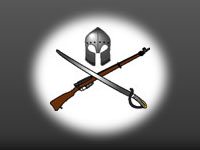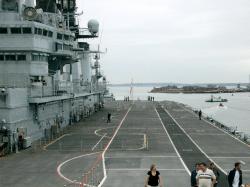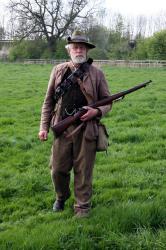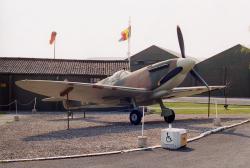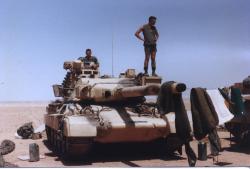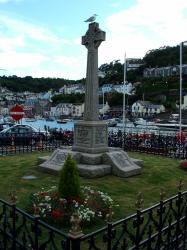Translate this Page
Anniversaries for today :
Welcome to Clash of Steel!
[ About us ]
[ Contribute a battle ]
[ Contribute a review ]
[ Contribute a reenactment group ]
[ Contact us ]
Featured battle : Lexington & Concord
Part of American War of Independence
Date : 19 April 1775
The opening engagements of the war. A British force under Col Smith attempting to arrest members of the Provincial Congress and seize rebel arms were briefly engaged by a small party of rebels as they approached Lexington, then came under increasing heavy fire as they retreated, empty handed, from Concord. Reinforcements and artillery under Brig. Perce enabled the British to reach the safety of Bunker Hill but not without loss.
Featured image :
International Harvester M5 halftrack

This halftrack produced during the war under the lend-lease agreement could carry 3 crew and a section of 10 infantrymen with a reasonable firepower. It has a .50 calibre machine gun on a ring mount above the crew compartment (unfortunately covered with a canvas in these photos) and 3 pintel mounts in the troop area for a further 3 .30 calibre MG's.
Gallery updated : 2022-04-04 08:33:43
Featured review :
Hill 112, The Key to Defeating Hitler in Normandy
Tim Saunders
This is the story of the battle for one hill in the whole of the Normandy campaign. The content covers all layers of action from Montgomery’s strategic vision to the gritty realism of the individual soldier. Voices from both sides are heard as the positions shift back and forth over quite a small very important hill. Tim Saunders’ extensive research has produced a narrative which takes the reader as close to the truth of a battle as one can get. So close that some of the truth is not for the squeamish. The casualties on both sides were huge but the action succeeded strategically in pulling in most of the Panzer reserves to free up the American sweep to the south.
The gripping narrative is supported by an abundance of maps and a super set of photographs, as far as battle books go you could not get better.
We highly recommend Tim Saunders’ book.
Pen & Sword Military, 2022
Reviewed : 2022-08-29 09:00:49
